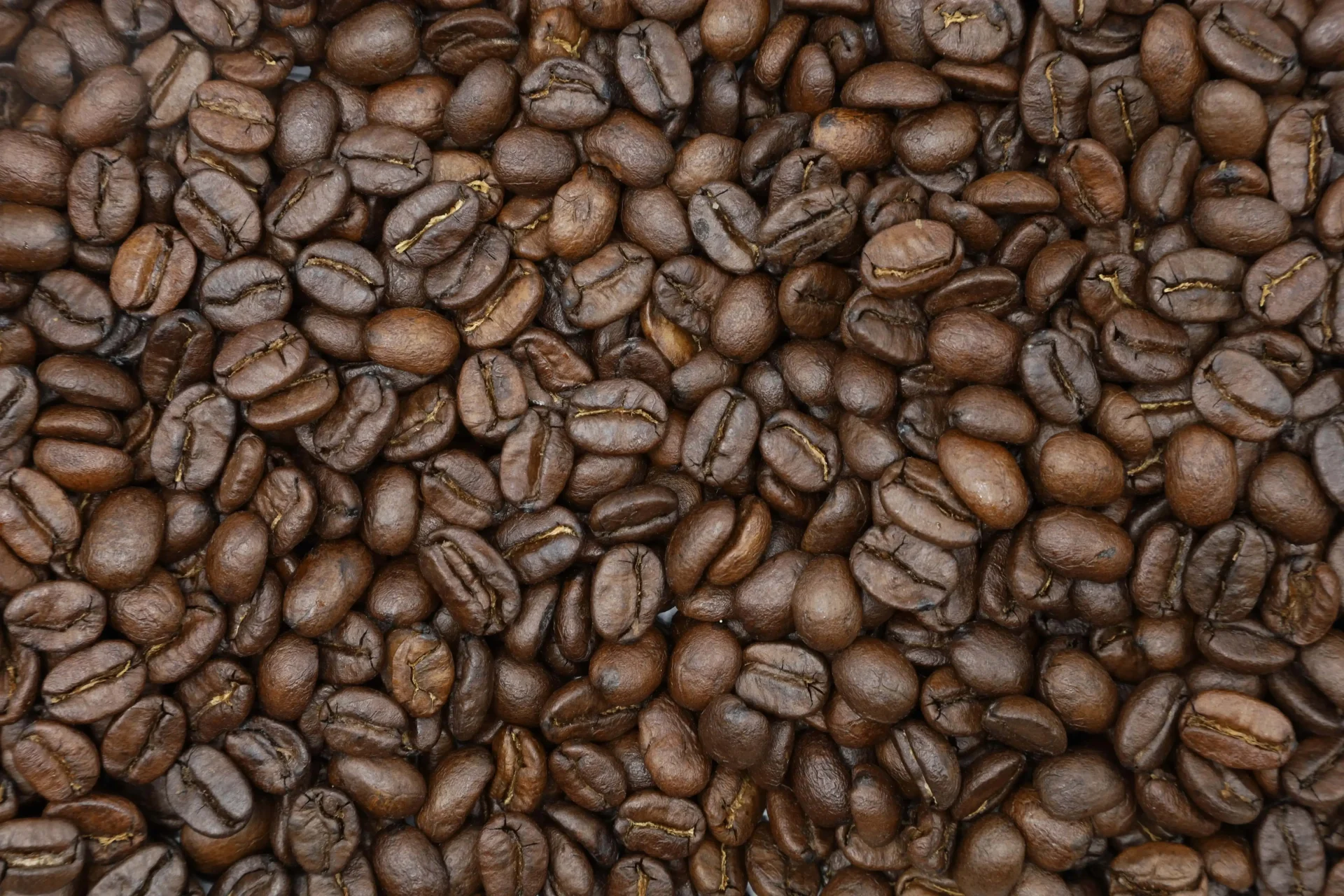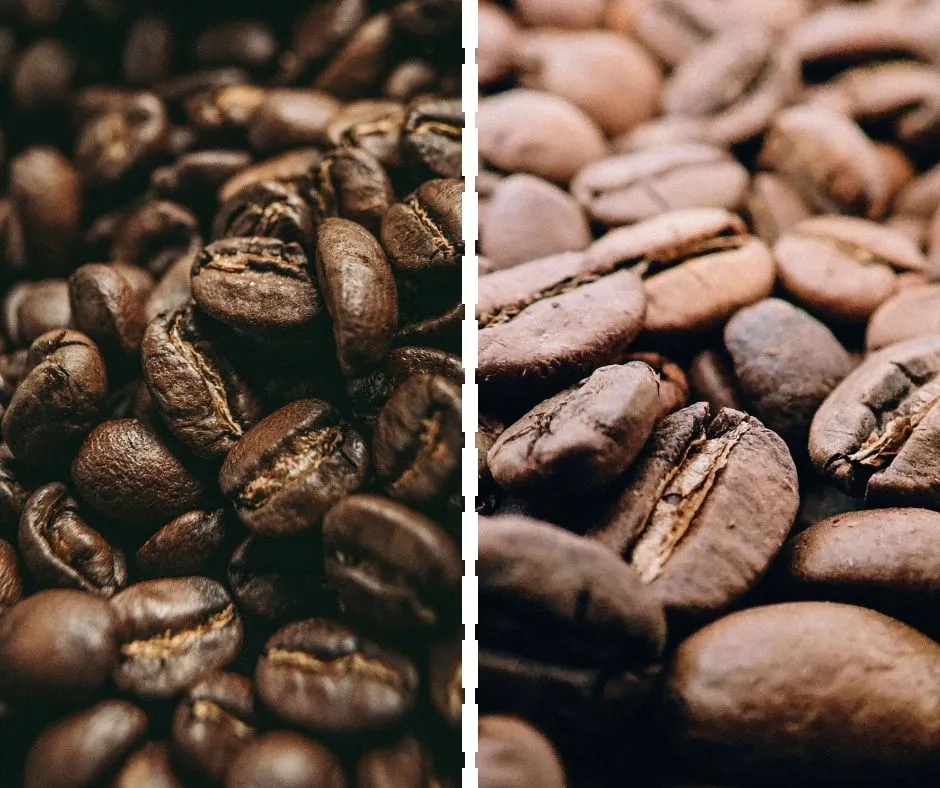How Much Caffeine is in Coffee Beans?

Coffee has become essential to morning routines. Many of us love hot and relaxing coffee with a fragrance that brings comfort and joy to our daily routine, helps us focus, and makes us alert. Its natural caffeine delivers energy and attentiveness that helps people wake up.
Understanding the caffeine content in coffee beans is essential for coffee lovers seeking to tailor their brews to their preferences. In 100 grams of coffee beans, you’ll find varying levels of caffeine, depending on factors like bean type and roast. On average, Arabica beans contain around 0.8 to 1.4 grams of caffeine per 100 grams, while Robusta beans pack a bit more punch, roughly 1.7 to 2.4 grams per 100 grams.
This means that Robusta beans tend to have a higher caffeine content than their Arabica counterparts. Zooming in further, a single coffee bean contains about 1.4 to 2.8 milligrams of caffeine. So, when you’re crafting your perfect cup, keep in mind the type of bean you’re using and the brewing method, as these factors play a significant role in determining the caffeine levels in your morning pick-me-up!
There are quite a few health benefits of coffee. You should pay attention to your daily caffeine intake; the limit of caffeine recommended by health experts is 300 to 400 milligrams.
If you’re curious about tracking your daily caffeine intake, we’ve got you covered. To give you an idea, a standard eight-ounce cup of brewed coffee typically contains around 95 milligrams of caffeine, while a single shot of espresso holds about 63 milligrams. For more intriguing coffee-related insights, such as the safety and enjoyment of eating coffee beans, check out our detailed exploration here.
Table of Contents
How Much Caffeine is in A Shot of Espresso?

There are two significant types of coffee beans, Arabica and Robusta. Arabica coffee beans are considerably high in quality and used more generally than Robusta coffee beans.
A regular espresso shot of Arabica coffee or one ounce has approximately 40 milligrams of caffeine. In contrast, a typical American cup of coffee is at least 8 ounces, which means an Arabica coffee cup has 200 milligrams of caffeine. Robusta coffee beans contain nearly double the caffeine of Arabica beans.
While the higher caffeine content in Robusta coffee might seem appealing, it’s essential to consider the taste trade-offs. Arabica beans, known for their subtle bitterness and sophisticated flavors, are often preferred over Robusta. Robusta beans, typically found in budget blends and instant coffees, can offer a less enjoyable experience due to their pronounced bitterness.
To delve deeper into the different types of coffee beans, including their taste profiles and characteristics, explore our comprehensive guide on 4 Types of Coffee Beans.
Does Dark Roast Have More Caffeine?

Which roast has the most caffeine? The style of roasting the coffee bean also affects the caffeine level. Precisely, it is an opinion that darker roast coffee beans have more caffeine than lighter, and that’s just a myth. Dark and light roast beans have almost the same amount of caffeine.
When you measure by volume (with a scoop), light roast beans will have a little more caffeine because they are denser and have more mass, and dark roasted beans may make a strong flavored coffee, but that does not have any effect on the caffeine’s amount that ends up in the brew.
Which Coffee Brewing Method has the Most Caffeine?
The basic level of caffeine in coffee beans is consistent, and the method of brewing you choose affects the caffeine level in the cup.
You can adjust the caffeine you need on any particular day by correctly brewing coffee.
Here’s a short guide about the caffeine levels of standard brewing methods:
1: Plunger/Press Methods.
Coffee made with a French press has the lowest level of caffeine, averaging approximately 108 milligrams per 8-ounce cup.
2: Pore Over/Drip Methods.
Coffee made with Pore-Over/Drip methods or a filter has approximately 145 milligrams per 8-ounce cup.
3: Percolate Method.
Coffee made in a percolator averages around 200 milligrams per 8 ounces.
4: Vacuum Pot (Siphon Pot) Method.
Coffee made with a vacuum pot, known as the siphon pot, has approximately 246 milligrams per 8-ounce cup.
Generally, methods that take a long brewing time and finer coffee grounds coffee have higher amounts of caffeine.
How Much Caffeine is Extracted from Coffee Beans?
A coffee bean which would be about 130 mg, depending on the exact size of the bean, has 1.1% to 1.4% caffeine in the first extraction.
However, after the first extraction, caffeine is still present in used coffee grounds, and we know this because they still have caffeine.
Research in 2013 determined that many coffee beans had 12.0-14.0 mg of caffeine per gram, and one sample had 19.9 mg/g.
There are approximately 7 to 9 coffee beans per gram, which provides almost a value of 1.4 to 2.8 mg of caffeine per bean.
Chocolate Covered Coffee Beans

Anyone who has ever consumed chocolate-covered coffee beans can testify that they take more caffeine than 1.4-2.8 mg per bean.
One manufacturer (Crackheads) had tested their dark chocolate-covered coffee beans for total caffeine amount and found about 5-7 mg per bean with the chocolate. And this seems relatively high because dark chocolate itself has caffeine.
Summary: Caffeine in Coffee Beans
The type of coffee bean used can significantly impact the caffeine content, more so than the roasting process. For instance, an Arabica bean typically holds around 1.4 milligrams of caffeine per bean, whereas a Robusta bean contains approximately 2.8 milligrams. When you brew an 8-ounce cup using Arabica beans, you end up with about 95 milligrams of caffeine.
Understanding these nuances not only helps you monitor your daily caffeine consumption but also gives you some interesting coffee facts to share with friends.
For a deeper dive into coffee varieties, including the delights of Colombian coffee, explore our article on Colombian Coffee: Top Brands, Blends, and Aromas.
